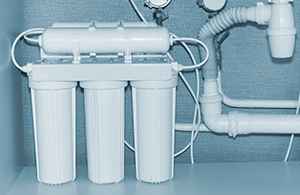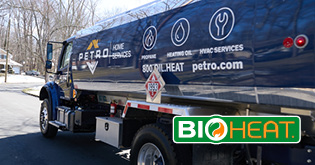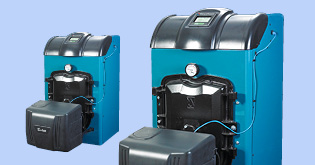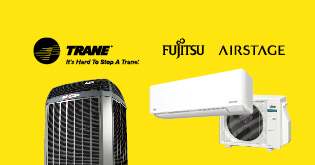- My Account:
- Sign In
- Register
- Make Payment

How to choose and install a whole home water filtration system.

Home water filtration systems come in a variety of flavors and filter types. Before you choose which type to install in your house, you should get to know more about the multiple types and uses of home water filter systems.
The key points include the following significant options.
Filter type
- Ion exchange, which “softens” the water supply
- Reverse osmosis
- Carbon filtration
Filter system size to fit your kitchen layout and personal preference
- Countertop
- Under sink
- Whole house system
Cost to buy and ease of installation (for DIYers) depends upon the type of system, scale, and complexity.
Filtration type: Reverse osmosis advantages.
Reverse osmosis (RO) water filtration systems are popular for numerous reasons. This type of filter system is simple and not complex. This process features removing dissolved inorganic solids using your household water pressure (typically around 50 to 60 psi). Reverse osmosis filtration pushes tap water through a semipermeable membrane filter.
But, how does it work and why is this a good water filtration option? Please continue reading to learn the advantages of RO and how it works. Many American households use RO because:
- It creates super-tasting water
- Handles its job safely and effectively
- Filters are totally automatic, no user involvement is necessary
- Reasonable pricing is an important feature of RO systems
- You need not keep buying cases of expensive bottled water, since your pure water will cost only pennies per gallon
- Simple kitchen tap installation for superior-quality drinking water
Carbon filtration systems.
One of the most popular types of home water filtration, carbon filters are very effective and give you multiple options for use. If your family are not “water hogs,” a simple special canister fitted with a carbon filter may be sufficient.
The principle of chemical absorption removes contaminants and impurities from tap water using activated carbon filters. Just a pound of activated carbon offers a surface area of around 100 acres; therefore, activated carbon is extremely efficient as a filter. Active charcoal carbon filters will remove chlorine, odors, sediment, and other volatile organic compounds, and improve the taste of water. However, carbon will not remove minerals and salts from filtered water.
Carbon filters will remove particles in the range of 0.5 micrometers up to a full 50 micrometers. Water typically flows through carbon filters at less pressure (therefore, slower) than water supply pressure so contaminants are exposed to carbon filters for a slightly longer period making these filters even more efficient.
Along with home and business use as water purifiers, carbon filters (along with HEPA filters) are employed to exhaust air that may be slightly radioactive from rooms used in radiation and nuclear medicine treatments. This displays the effectiveness and versatility of activated carbon filters for diverse uses.
Filtration type: Ion exchange.
Ion exchange water filters are popular because the water traverses over a resin that eliminates unwanted ions with more desirable ions. A popular use for ion exchange technology, which replaces any calcium and/or magnesium in your tap water with sodium.
Ion exchange filtration systems “softens” the water supply coming into your home. Often, city or well water is “hard,” which contains numerous impurities. Water softening is now a vital result in filtration systems that purify your home drinking and cooking water.
The resin used to replace unwanted ions in unfiltered tap water should be periodically recharged with new desirable ions. Ion exchange resins (polymers) function as mediums in these filtration systems which achieve water softening and incoming water purification. Typically, these resins are in the form of “beads,” typically, made of sodium polystyrene sulfonate, which is very acidic. These resins (polymers) are porous allowing the medium to replace undesirable ions and impurities in your home’s tap water.
Ion exchange resins come in four flavors depending on their functional jobs. These four varieties include the following types:
- “Strongly acidic,” which appear in most water-softening filtration systems
- “Strongly basic,” using amino acid groups
- “Weakly acidic,” which, typically, are based on carboxylic acid varieties
- “Weakly basic,” which feature weaker amino acids
Water softening is the primary function of most ion exchange filtering systems for the home and small businesses. The harder the water supply, the more you should consider ion exchange filtration options.
Filter size: Under sink installation.
Under sink installation eliminates the bulky filters on the ends of your kitchen faucet arm. This type of install is the most cost-effective installation for individual sinks. However, if you have three or more bathroom sinks and, therefore, sinks, you should consider the larger “whole house” system, as you will eventually become weary of installing numerous under sink purification products.
If you are moderately skilled with plumbing DIY projects, you can save the labor cost of having your favorite plumber install your under-sink system. It is not overly complex or difficult to install under sink systems.
There should be room under kitchen and bathroom sinks to fit an under-sink water system of each type (reverse osmosis, carbon filtration, and ion exchange). You should only need moderate plumbing skills to install under-sink filtration systems.
Whole house installations.
These are the most complete and complex systems for your home. Typically, whole house installations are used when you care about your home water quality in more than two locations in your house. The installation of these filtrations is identical for all filter types, since they differ only in the way water is filtered and the contaminants they eliminate.
You’ll need the following tools if you choose to make this a DIY project.
- A drill
- Assorted drill bits
- 2 adjustable wrenches, different sizes
- A tubing cutter
- Buckets (plural) to catch any water remaining in your main supply after shut off.
- A whole house water filter system
Choose a location near the main water supply for your home. You want to ensure that it’s easy to replace the filters in your system. Remember, you are filtering the entire incoming water supply for the whole house.
These are the installation steps you should follow if you wish to install a whole home water filter system as a do-it-yourself.*
- Choose an easily accessible location, but near the main shutoff valve. Be sure you have space under the filter system to change the filter when necessary.
- Cut the pipe and install a new shutoff valve. Be aware you made need an adapter on each side of the filter to attach your pipe size and your new filter.
- Assemble the filtering system to be sure you can access and replace the filter easily. Once you are satisfied with the ease of a filter change, you can mark it for cutting.
- Mark the pipe to make an accurate, useful cut.
- Time to install the new filtering system. Remember to slide on the compression rings and put the nuts you need to make a snug, leak-free connection. Tighten the nuts to make a secure connection. You can now turn the water back on at the main valve. Be sure there are no leaks, or tighten your connections.
- If you do have a ground wire already installed to your water supply pipe, you will need to add a jumper cable to restore this feature.
You now have successfully installed an effective whole house water filtration system. Congratulations!
Summary and conclusions: The perfect home water filter for you.
Now you know the different filtration options available to you. The prices for each filter type vary from US area to area, as do professional installation services.
You should have your water supply tested to learn the contaminants inherent in your city water or well. Once you test your tap water, you will know the appropriate type of filter you need (reverse osmosis, carbon, or ion exchange) for a countertop, under-sink, or whole house water filtration system.
Installing a water filtration system is a fairly complex project which is best left to an experienced professional plumbing expert. Do not be shy about calling a professional, like one of the Petro Home Services team, if the install appears to be a bigger project than you want to handle yourself.
If you decide to install the filter yourself, be sure to shut off your home water supply before taking any steps to install any filtration system. Should you forget to do so, you will get an unwelcome “water-under-pressure” surprise.
When you are concerned about the quality of your drinking and cooking water only, a pitcher with filter or one attached to your kitchen faucet may be a good, low cost solution. However, if you would like your shower and “wash up” water to be pure also, a whole house filtration system may be the perfect choice for you. Contact us to learn more about our home water filter installation services.
Petro Home Services is proud to not only serve communities in DC, CT, MA, MD, NJ, NY, PA, and RI but we also proudly acknowledge the skills and experience of our expert team behind all resources. With insights on topics ranging from heating oil facts to common air conditioning questions, you can rely on Petro Home Services for facts and information to help you understand more about your heating, cooling and home comfort needs. This article and all articles on the Petro Home Services website have been approved by our team of home service experts.






